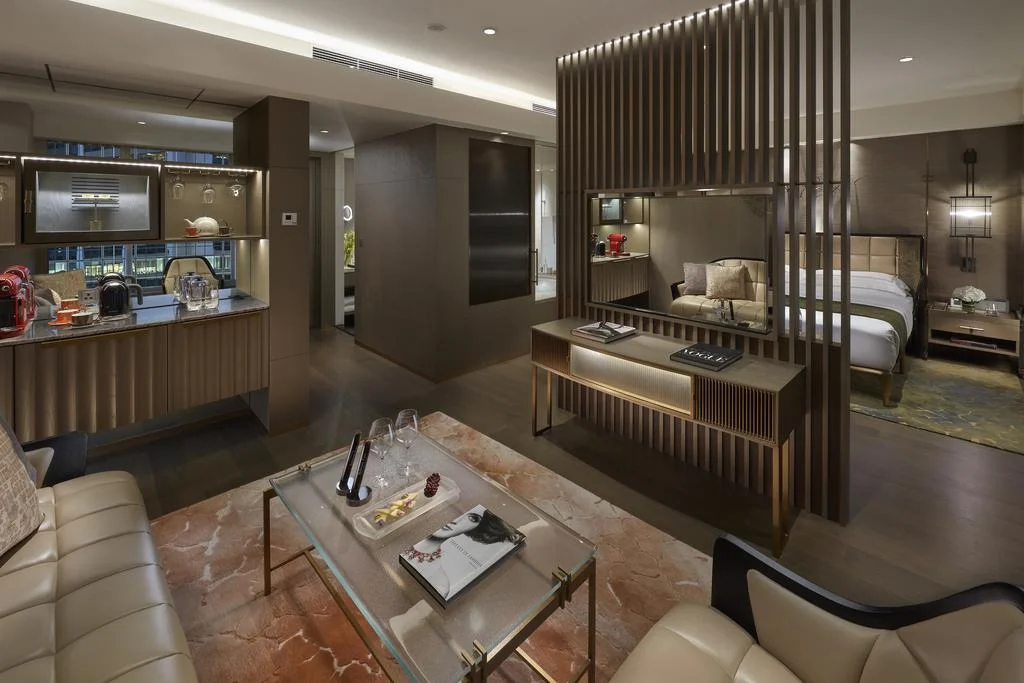FF&E Definition and Examples in Commercial Real Estate
FF&E—furniture, fixtures, and equipment—are business assets that are as important to interior design as to your company’s bottom line. They’re used in the everyday running of a business and in determining the value of that business. Learn more about why FF&E assets are essential in real estate and finance.
What Is FF&E?
In commercial real estate, FF&E stands for furniture, fixtures, and equipment. You might also see the word “accessories” in the place of “equipment,” and the acronym instead becomes FF&A. These types of assets include movable furniture and electronic equipment.
As tangible assets, FF&E items cannot have a permanent connection to the building in any way. For example, faucets and lighting fixtures are not FF&E since they are part of the structure of a building itself. In contrast, office furniture like couches, desks, sofas, shelving, and bookcases are examples of FF&E.
While a general contractor (or building contractor) is likely responsible for all fixed assets in any office building, business owners often work with an interior designer or interior design team to help with FF&E procurement.
In commercial real estate, FF&E stands for furniture, fixtures, and equipment. You might also see the word “accessories” in the place of “equipment,” and the acronym instead becomes FF&A. These types of assets include movable furniture and electronic equipment.
As tangible assets, FF&E items cannot have a permanent connection to the building in any way. For example, faucets and lighting fixtures are not FF&E since they are part of the structure of a building itself. In contrast, office furniture like couches, desks, sofas, shelving, and bookcases are examples of FF&E.
While a general contractor (or building contractor) is likely responsible for all fixed assets in any office building, business owners often work with an interior designer or interior design team to help with FF&E procurement.
Why Is FF&E Important in Commercial Real Estate?
Furniture, fixtures, and equipment are part of the design process for a company and financial assets as well. Including the total costs of these FF&E items on your business’s balance sheet can lead to tax breaks and deductions. They also are key factors in determining a company’s accurate valuation—the sale price of an entire business. This sort of valuation is also useful in the case of a business’s liquidation (the mandated selling off of business assets in the event of bankruptcy or insolvency).
Furniture, fixtures, and equipment are part of the design process for a company and financial assets as well. Including the total costs of these FF&E items on your business’s balance sheet can lead to tax breaks and deductions. They also are key factors in determining a company’s accurate valuation—the sale price of an entire business. This sort of valuation is also useful in the case of a business’s liquidation (the mandated selling off of business assets in the event of bankruptcy or insolvency).
3 Factors That Determine the Value of FF&E
FF&E, or furniture, fixtures, and equipment, are commercial real estate items that are not permanently attached to the space—that is to say, they are not fixed assets. As assets, they can contribute value to the company that owns them. Different businesses will desire different specifications for their FF&E, but there are several elements you must consider when determining whether an asset is, in fact, FF&E, and what its value is to the business. Here are three of those key attributes:
FF&E, or furniture, fixtures, and equipment, are commercial real estate items that are not permanently attached to the space—that is to say, they are not fixed assets. As assets, they can contribute value to the company that owns them. Different businesses will desire different specifications for their FF&E, but there are several elements you must consider when determining whether an asset is, in fact, FF&E, and what its value is to the business. Here are three of those key attributes:
- Durability: While FF&E can’t be part of the building itself, it also can’t be readily disposable. FF&E should last for over a year at least. Consumable food, paper products, pens, pencils, and the like may all be important office assets—but they don’t meet the Internal Revenue Service (IRS) standards for FF&E if you’re planning to claim them on your business’s taxes. You might also refer to these sorts of elements as operating supplies and equipment (OS&E).
- Functionality: FF&E must have a function in the performance of business operations. For instance, at a restaurant, the tables and chairs are furniture and fixtures, while the point-of-sales (POS) system is equipment. All of these play a much needed function in business activities. Proving this sort of functionality is what makes it possible for you to include these assets as line items once tax season rolls around.
- Lifespan: While all FF&E must last for longer than a year, each individual FF&E item may have a different “useful life” (an accounting term for how long you can claim the item for tax purposes). As depreciation of these items occur over their “useful lives,” you might be able to take advantage of additional tax deductions, incentives, and so on.
Bestar Hospitality is a leading China manufacturer of wide diversified choices of bespoke furniture for commercial real estate industry, for example, hotels,clubs, bars, restaurants, spa, etc, providing professional FF&E solutions (furniture, fixtures and equipment)for contractors, designing firm and corporations’ procurement teams. Its ongoing success is supported by continuous enhancement of innovative designs and quality-oriented management philosophy.


